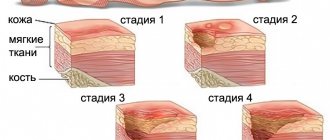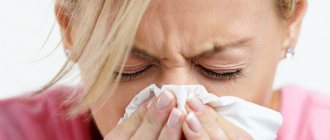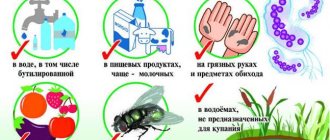Temperature from nerves - professional psychologists and neurologists are not surprised by this phenomenon. After all, the human body reacts sensitively to various processes occurring in the nervous system. You just have to strain yourself a little or overdo it with stress, and the body will respond with an increase in temperature. Clinical psychologist, neuropsychologist Irina Khvingia told AiF.ru about what thermoneurosis is, who is more susceptible to it than others and what consequences it can lead to .
The essence of the problem
There is no official diagnosis of “thermoneurosis” as such. But the phenomenon itself exists. Thermoneurosis is usually understood as a psychosomatic disease when a person experiences an increase in temperature over a long period. The numbers will be low-grade, that is, the temperature will fluctuate between 37-37.5 degrees. This is one of the manifestations of vegetative-vascular dystonia, and some experts even consider this state of affairs to be a sign of depression.
There are two types of thermoneuroses: psychogenic, which occurs against the background of stress, and neurogenic, when the brain is affected by hematomas, cysts and other formations that put pressure on the thermoregulation centers.
Article on the topic
Psychologist instead of antipyretics. How to calculate thermoneurosis?
If we are talking about a tumor, then we will have to be regularly examined and monitored. If the tumor does not grow, people live well with it for many years. In this case, it is usually recommended to undergo an MRI procedure once a year in order to monitor the condition of the formation in detail.
Temperature of a psychogenic nature can be elevated for a long time: from several days to several years. It all depends on who and how helps a person cope with the disorder. If everything is left to chance, the situation can be long-lasting.
We talk about thermoneurosis when the temperature remains unchanged throughout the day and for at least several days. For example, if it always stands at 37.2 or 37.3. To exclude factors influencing temperature and determine a more accurate diagnosis, it is recommended to draw up a temperature chart. Indicators must be measured three times a day. The first time is 20-30 minutes after sleep. There is no need to do it right away, without getting out of bed, because after waking up, everyone’s temperature is slightly elevated. Then measurements are taken during the day without reference to meals. And the third dimension is before bed.
Vegetative-vascular dystonia - a disease or a myth? More details
Symptoms of psychogenic fever
The temperature due to nervousness can rise either for a short time, that is, be timed to coincide with a specific stressful event, or be almost constant.
Often, a rise can be observed when a person is in certain circumstances. For example, always at work, but not at home. Or vice versa at home and on weekends, and with the start of the work week the problem disappears.
Some people have a higher temperature in the morning, while others have a higher temperature in the evening. Moreover, these changes may run counter to normal human circadian rhythms.
Attention!
Before you firmly believe that your temperature is rising due to stress and anxiety, you need to undergo a medical examination. At least just do a general blood test. Since an increase can indicate a variety of pathologies, including oncological ones.
At the same time, there are indirect signs that the fever is psychogenic. This:
- the temperature due to nervousness never exceeds 37.5 degrees;
- it lasts for a long time, but your general well-being does not change in any way, that is, the disease does not progress, but recovery does not occur;
- the temperature is not reduced by either aspirin, paracetamol, or other similar drugs;
- normalization occurs when you are busy with something that really distracts you with thoughts about your supposed illness;
- if you place 2 thermometers under different armpits at the same time, the values on them will be very different from each other, for example, 36.8 and 37.4;
- it often seems to you that the temperature is higher than it actually is;
- you feel like you have a fever, but at the same time you have a cold nose, icy hands and feet;
- After taking a hot shower it becomes easier, sometimes even just holding your hands under hot water helps.
The main sign.
You have already been diagnosed with “neurosis” or “vegetative-vascular dystonia (VSD)”. You have already had other psychogenic symptoms in your life. And you were examined, but no pathologies other than “nerves” were found.
Who is susceptible
The psychogenic option is more of a topic for teenagers and older people. After all, the loads are growing. For example, for children this means increased responsibility at school. A large number of classes, additional clubs and sections. Normal overwork occurs, the body cannot stand it and produces such a reaction.
This condition is typical for people with a hysterical personality type, those who are susceptible to hypochondria, suspiciousness, and those who are prone to various types of psychosomatics. Because they are the first to react to stress, and an increase in body temperature is the simplest reaction.
Can stress cause fever in adults and children?
Can stress cause fever in adults and children?
An increase in body temperature (hyperthermia), as a rule, is associated with inflammatory or infectious diseases: ARVI, otitis media, etc. But few people know that severe stress in combination with some other factors can also cause this symptom to appear. Most often, this is due to a temporary malfunction of the nervous system, which is involved in regulating body functions, including thermoregulation - maintaining the correct ratio of body temperature and ambient temperature. But the influence of nervous fatigue or overstrain sometimes extends much further, and with prolonged absence of treatment for acute or chronic stress, other health problems can develop.
If your temperature rises, you should consult a doctor immediately.
Why does the temperature rise during stress?
Increased hypersensitivity. A low level of stress resistance is the main cause of hyperthermia during nervous tension. An excessive reaction to the words of others, increased suspiciousness and anxiety - the emotions that a person experiences trigger a series of biochemical reactions in the body with the release of hormones, neurotransmitters, neurotransmitters, etc. And some of them sometimes lead to a stressful increase in body temperature - this is how the body perceives an increase in the level of some substances in the blood and a decrease in others. Accordingly, people with a low stress tolerance threshold are more susceptible to stress hyperthermia.
Decreased immunity. Frequent or constant stress can have a depressing effect on the immune system, which can react by increasing body temperature to the most minor stimuli: inhaling cold air, reducing sleep by 1-2 hours, new foods, etc.
Hormonal release. For this reason, an increase in body temperature is often observed in women during certain periods of the menstrual cycle. Most often this happens in the middle, during ovulation.
VSD (vegetative-vascular dystonia). Disorders of the functions of the autonomic nervous system can be considered one of the most common causes of stress hyperthermia. This is due to the fact that the autonomic nervous system directly and indirectly takes part in the regulation of body temperature. Prolonged stay in a stressful environment and conditions under which the nervous system does not have the opportunity to recover (serious lack of sleep, somatic diseases, severe concern for loved ones, etc.) can provoke VSD and, as a result, a violation of thermoregulation.
Other reasons. Psychogenic hyperthermia is a fairly common condition. Although it is usually characteristic of children, adults may also experience an unexplained increase in body temperature on the eve of an important event or event that for some reason causes negative feelings. Thus, the body “provides a good reason” for refusing to attend an event that causes internal resistance in a person.
What is the temperature due to stress?
The thermometer readings during a stressful increase in temperature can vary from 37 to 40 °C. Typically, the thermometer shows 37–38 °C during chronic stress - this is caused by a constant violation of thermoregulation. Above 39 °C, the temperature usually rises in moments of very strong single stress, for example, with extreme fear, with the news of the death of a loved one, etc. In this case, the increase in body temperature occurs suddenly - from normal it goes into very high within a few minutes . Such conditions are called paroxysms.
Types of paroxysms
Sympathoadrenal paroxysms. With them, the temperature rises suddenly. It can reach 38–39 °C. At the same time, other symptoms often develop: heart rate increases, pupils dilate, skin turns pale, blood pressure rises, and a person may complain of a headache.
Vagoinsular paroxysms. They usually progress against the background of hyperactivation of the parasympathetic part of the nervous system. An attack may begin with a feeling of a sinking heart and a rush of blood to the face. The person may have difficulty breathing. He feels his chest being constricted and cannot take a breath, which causes him to panic and further complicates the situation. Skin and gastrointestinal manifestations may also occur: rash, itching of the skin, nausea, diarrhea. Blood pressure drops and heart rate decreases.
Mixed paroxysms. During attacks of this type, manifestations of both sympathoadrenal and vagoinsular paroxysms are observed. Symptoms can be mixed in different combinations.
With a paroxysmal increase in body temperature, the issue of correct diagnosis becomes most pressing. The symptoms of these conditions can almost completely mimic the clinical picture of hypertension or hypotension, but the treatment provided is ineffective. Therefore, even a single episode of paroxysm should attract the attention of the person who experienced it - it is necessary to undergo a comprehensive examination to identify the causes of this condition.
How to deal with high fever during stress
Only a doctor can select the methods and means necessary to eliminate stress hyperthermia in a particular case. It is important to take a comprehensive approach to solving the problem, and for this purpose, a specialist can recommend the following options.
Lifestyle correction . Physical activity, proper rest, and a balanced diet are of great importance for the health of the nervous system. However, it is not necessary to change your lifestyle radically. It is enough to make regular and leisurely walks in the fresh air a habit, organize comfortable sleeping conditions, and eliminate or minimize the consumption of alcohol and caffeinated products.
Massage . Depending on the specific situation, a relaxing or tonic massage performed by a specialist may be useful. It can have a reflexogenic effect and, as part of complex therapy, help restore the quality of sleep and normalize the functions of the nervous system.
Symptomatic therapy (as part of complex therapy) . A specialist may prescribe antipyretics if, after eliminating the factors that provoked stress, the body temperature does not return to normal.
Sedative over-the-counter drugs (as part of complex therapy) . To reduce sensitivity to stress or to treat already developed neurotic disorders, over-the-counter drugs that have a sedative effect may be prescribed. So, both as part of prevention and as part of treatment, the doctor may recommend Corvalol PHYTO . The main active ingredients in its composition are: motherwort herb, peppermint oil and ethyl bromizovalerianate. The drug is available in the form of tablets and drops. It can contribute to the onset of sedative, antispasmodic and moderate cardiotonic effects1.
Important! At the first symptoms, you should immediately consult a doctor.
Prevention
There are no specific prophylactic measures used to prevent stress hyperthermia. But general remedies and methods aimed at strengthening general health, increasing immunity, and reducing sensitivity to stress can help reduce the frequency of such attacks and prevent their development. The list of means that increase a person’s resistance to stress includes proper rest (including a night’s sleep of at least 6–8 hours), sports, and creativity, which can have a calming effect. In addition, it is important to use "event" therapy. Before any event (wedding, exams, interview, etc.) that can cause stress, the doctor may recommend taking mild sedatives. They can help you survive this event without unnecessary nervous tension and avoid the possible consequences of stress in the form of increased body temperature.
______________________
1 According to the instructions for medical use of Corvalol PHYTO.
Consequences of the problem
Thermoneurosis, which lasts for a long time, affects human health. And it doesn’t matter whether the body is a child’s or an adult’s. Children, as a rule, become irritable against its background. And adults become exhausted faster. Naturally, all this affects performance, because there is constantly not enough strength. At a constantly elevated temperature, the body requires more strength to concentrate attention and memory.
There are even more serious situations when symptoms such as fainting, arrhythmias, headaches, and sometimes insomnia appear. But still, for the most part, thermoneurosis is asymptomatic, accompanied only by fever and irritability. Against this background, the quality of life significantly decreases.
Temperature record. How to deal with high numbers on a thermometer Read more
Causes of fever in a child
An elevated temperature indicates the activity of the body's immune system. The level of thermoregulation is controlled by part of the diencephalon - the hypothalamus. It is responsible not only for the activity of the central nervous system, but also for metabolism, producing the corresponding hormones.
Important! It is the hypothalamus that regulates our memory and emotional state, the processes of sleep and wakefulness, feelings of hunger and satiety, as well as sexual behavior and reproductive function.
A temperature of 36°-37°C is considered normal, but during the day the hypothalamus, through skin receptors, modifies it under the influence of cold, heat, and stress.
Exposure to bacteria, viruses and protozoa provokes activation of the immune system and the development of fever. The condition is accompanied by:
- pallor caused by narrowing of peripheral blood vessels;
- muscle tremors caused by contraction of various muscle groups;
- weakness and headache (consequence of intoxication).
Thanks to chills, the body's protective properties are activated - immune response cells (macrophages, neutrophils, T-killers) are produced. All this slows down the growth of pathogenic microflora, stimulates metabolic processes, improves liver and kidney function (cleansing function).
What to do when the temperature rises
When thinking about how to reduce a child's temperature, it is important to consider the numbers on the thermometer. Raising your temperature is a natural defense against infection.
It is important to assess the general well-being of a small patient, the degree of his activity, the color of the skin, and appetite. The appearance of the baby will help indicate further actions.
Antipyretic therapy does not always lead to a positive result. Even with low-grade fever (slight increase to 37.5°C), an urgent examination and assistance from a pediatrician is recommended for the following symptoms:
- complaints of intense headache, dizziness;
- persistent crying or constant lethargy;
- convulsions;
- episodes of loss of consciousness;
- decreased blood pressure (for infants below 80/40 mmHg);
- vomiting or diarrhea more than 5 times a day;
- acute abdominal pain;
- sore throat when swallowing or on its own;
- pain in the ear on its own or when pressing on the tragus;
- sharp occipital pain when bringing the chin to the chest.
To avoid complications, you should consult a doctor:
- if an infant under 3 months has a temperature of 38.0°C or more;
- if, against the background of antipyretic drugs in children under 3 years of age, the temperature remains 38.0°C or higher for 3 days;
- if a child over 3 years old has a temperature above 38.5°C;
- temperature from 39.5°C in any age category;
- return of attacks of chills after several days of normalization of health;
- dry skin, rare urination.
In what cases and what temperature should I lower my child?
In some cases, fever must be eliminated:
- The baby complains of feeling unwell (regardless of the numbers on the thermometer).
- A child with chronic congenital or acquired diseases (heart defects, problems with the central nervous system, lungs).
- The patient had a history of seizures.
If the baby is feeling well, the rectal temperature (the thermometer is inserted into the rectum) is 38.8°C or lower; you should not take antipyretics (antipyretics).
Important! The immune system is activated when the temperature rises above 38°C. Massive production of biologically active substances by the immune system begins at 38.5°C and above.
If you are alarmed by certain symptoms and are not sure what temperature to lower in your child, it is advisable to consult with an experienced pediatrician.
How to deal with the problem
As can be understood from the nature of the process, there are no absolute measures to prevent the influence of excitement on thermoregulation. It is important to reduce the disturbing influence on the body's defense mechanisms.
Preventive measures:
- moderate exercise helps reduce the likelihood of developing autonomic disorders;
- compliance with the work and rest regime, a strict daily routine;
- preventing the onset of chronic fatigue, normalizing lifestyle;
- avoidance of stressful situations;
- hardening - the procedure strengthens the immune system;
- mastering meditation techniques;
- massage and self-massage;
- course of psychotherapy;
- moderate diet.
The best way to overcome the condition is to become aware of the processes taking place and understand their causes. Knowing that temperature is caused by emotions will help you take control of the situation. Drug intervention should be considered as a last resort, since it is not necessary.










